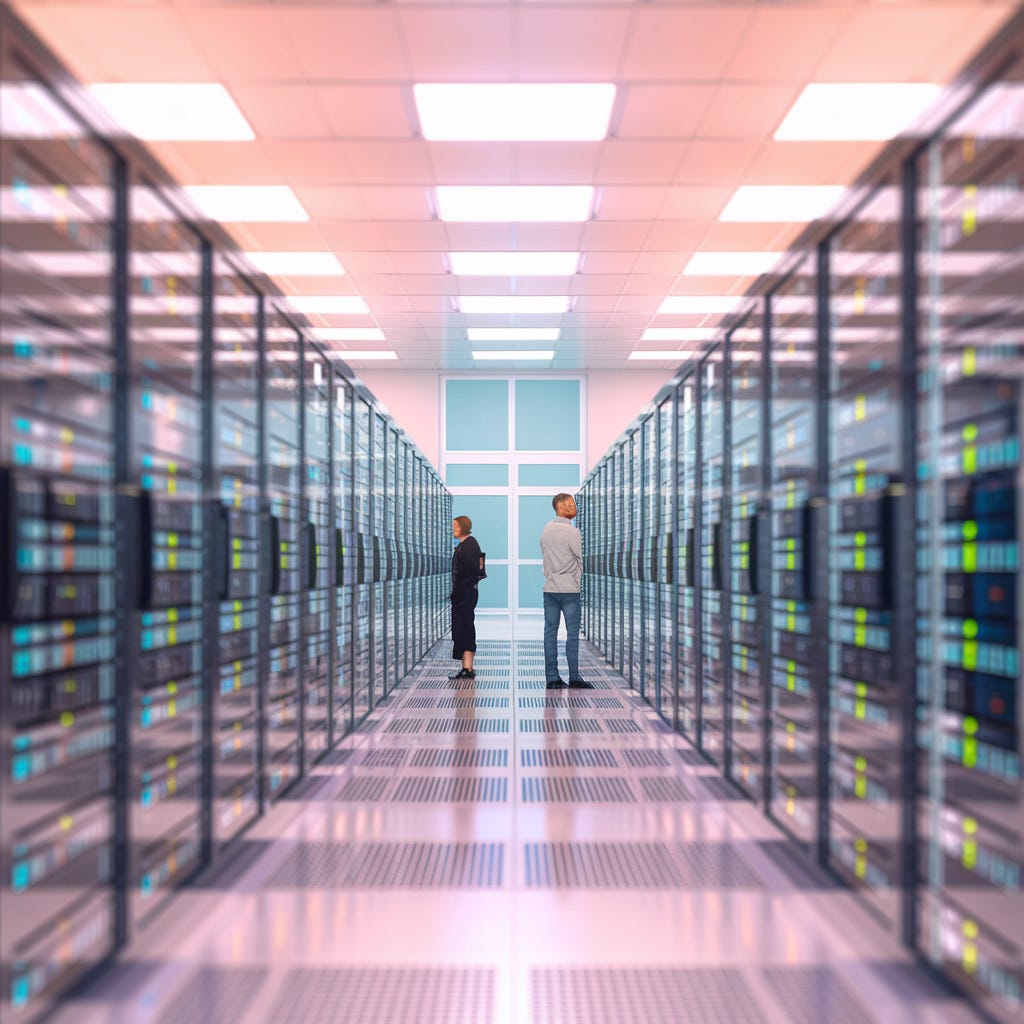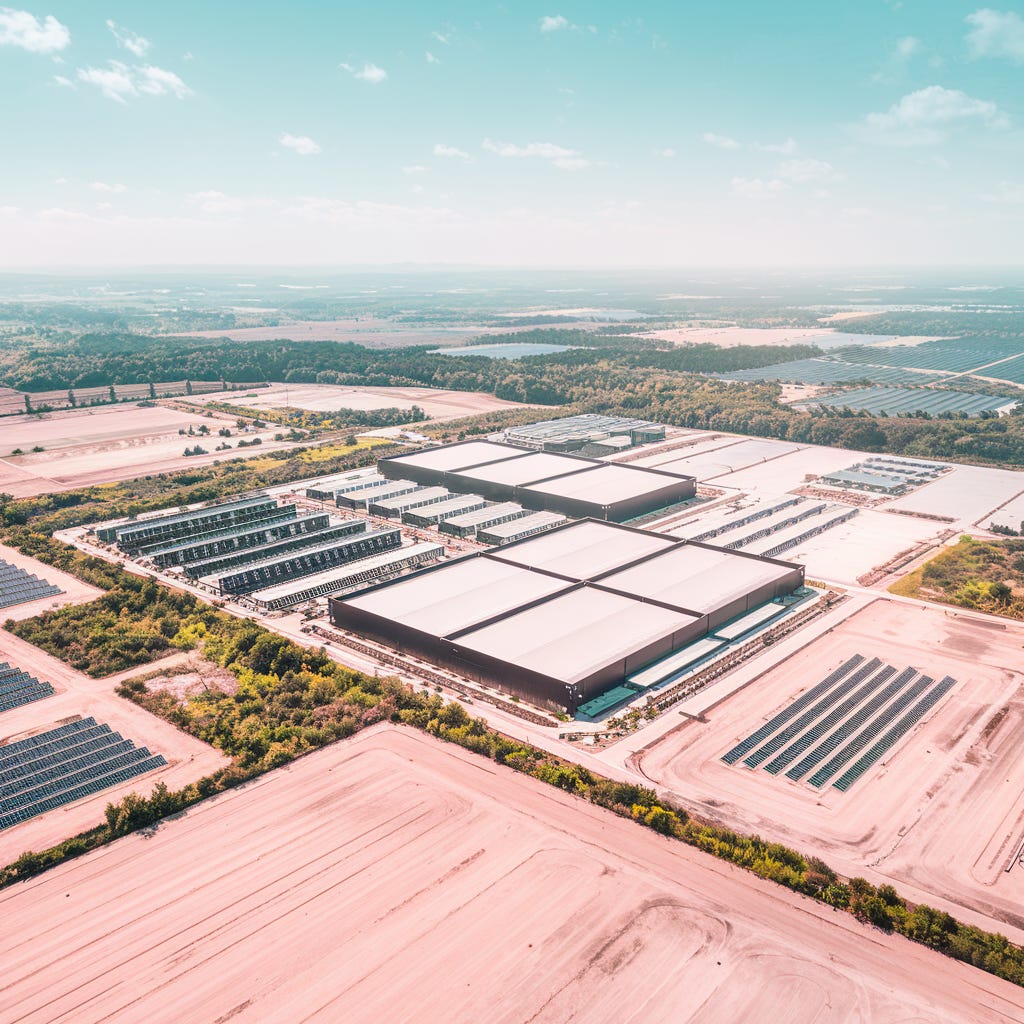What Forward-Thinking Data Center Operators Know About Emerging Tech That Others Are Missing
While everyone focuses on the latest AI models and IoT applications, few recognize the critical infrastructure transformation happening beneath the surface.
Without specialized data centers, these technologies would remain theoretical concepts rather than market-changing innovations.
The most powerful AI model is useless without the physical infrastructure to run it.
This dependency creates both an urgent challenge and a significant opportunity for those who can bridge the growing gap between technology ambitions and infrastructure realities.
The Scale Reality Most Operators Underestimate: Why Traditional Infrastructure Falls Short for Emerging Tech
The relationship between emerging technologies and data centers has fundamentally changed.
What was once a simple housing function has evolved into a complex enabling ecosystem that directly determines which innovations succeed and which remain theoretical.
AI workloads alone have rewritten the rules of data center design. Training a single large language model requires computing power equivalent to what would have filled entire data centers just five years ago.
These aren't incremental changes—they're exponential leaps that require complete rethinking of how facilities are designed, powered, and cooled.
The numbers reveal the magnitude of this shift. Global data creation is projected to surpass 180 zettabytes by 2025—roughly tripling in just five years.
This isn't just more of the same; it represents fundamentally different data types, processing requirements, and geographic distribution patterns.
What many operators fail to recognize is that this growth isn't uniform across technologies or markets.
AI computation requires 10-15x more power than traditional workloads. IoT applications generate massive data volumes but require processing at the edge. 5G enables new applications that cannot function with traditional latency profiles.
The operators who understand these technology-specific requirements gain significant competitive advantages. Those who view data centers merely as standardized technical real estate will increasingly find themselves unable to serve the highest-value segments of the market.
The Technology-Specific Requirements Smart Operators Are Building For: AI, IoT, and Cloud's Hidden Demands
Each emerging technology creates its own distinctive infrastructure profile, requiring specialized approaches to facility design and operation. This specialization is creating a new competitive hierarchy based on technical capabilities rather than traditional metrics like size or location.
AI and high-performance computing have perhaps the most dramatic impact. A single rack of AI training hardware can draw 30-80 kW of power—up to 10 times more than typical enterprise servers. This density requires:
Higher capacity power distribution systems
Advanced cooling technologies, often including direct liquid cooling
Reinforced flooring to support heavier equipment
Enhanced security for protecting valuable intellectual property
What's often overlooked is how these requirements create natural competitive moats. Not every facility can support these workloads, allowing AI-ready space to command 20-40% premium pricing compared to general-purpose capacity.
IoT applications create different but equally significant demands.
While individual devices have modest computing needs, their aggregate data volume and real-time processing requirements dramatically reshape network architectures. Applications like autonomous vehicles, industrial automation, and smart city infrastructure need response times measured in milliseconds, driving processing capacity closer to data sources.
Cloud computing continues to power the expansion of hyperscale facilities—massive data centers that efficiently support elastic demands. These facilities represent the backbone of the digital economy, but they're evolving beyond simple scale to incorporate specialized capabilities for emerging workloads.
The operators who will dominate the next decade aren't simply building more space—they're developing purpose-built environments tailored to specific technology profiles. This specialization delivers both premium pricing and stronger tenant relationships, creating sustainable competitive advantages.
The Edge Advantage Elite Operators Are Capitalizing On: Why Processing Location Now Matters More Than Size
Perhaps the most significant architectural shift driven by emerging technologies is the rise of edge computing—moving processing capacity closer to where data is generated rather than centralizing it in large facilities. This shift is fundamentally reshaping the geographic distribution of computing resources.
Edge computing directly addresses several critical requirements of emerging technologies:
Reduced latency enables real-time applications that would be impossible with traditional architectures
Bandwidth optimization reduces data transmission costs and network congestion
Enhanced reliability creates resilience against network disruptions
Localized processing supports data sovereignty compliance and reduces privacy concerns
What's seldom discussed is how edge computing creates opportunities in previously overlooked markets. Locations that might not support large-scale facilities can still accommodate edge deployments, opening new geographic possibilities for strategic operators.
The most forward-thinking companies have already demonstrated the value of this approach.
Telecommunications providers are deploying edge computing facilities to support 5G applications. Content delivery networks leverage distributed infrastructure to minimize latency for streaming services. Manufacturing companies implement private edge networks to support industrial IoT applications.
The edge isn't replacing centralized data centers—it's complementing them in a distributed architecture that spans from device to cloud.
This distributed model requires operators to think beyond individual facilities to integrated ecosystems, creating new opportunities for those with the vision and capabilities to execute across multiple tiers of infrastructure.
The Sustainability Strategy Top Operators Leverage: How Green Infrastructure Creates Pricing Power
The exponential growth in computing demand creates significant sustainability challenges that cannot be ignored.
Data centers already consume approximately 1-2% of global electricity, with projections suggesting this could reach 3-8% by 2030 without efficiency improvements.
Emerging technologies amplify these concerns.
AI workloads can consume 10-15 times more energy than traditional applications. The distributed nature of edge computing creates efficiency challenges through smaller-scale operations. Without innovation, technology growth could be constrained by power availability and environmental concerns.
The industry's response has been remarkably innovative:
Advanced cooling technologies like direct liquid cooling, immersion systems, and rear-door heat exchangers can reduce energy consumption by 30-50% while enabling the higher densities required by AI workloads.
These aren't merely incremental improvements—they represent fundamental shifts in how thermal management is approached.
Renewable energy integration has moved from aspiration to requirement.
Power availability and carbon intensity have become key location factors, sometimes outweighing traditional considerations like connectivity and labor costs. Power purchase agreements for renewable energy are now standard practice for major operators.
What's often missed in sustainability discussions is how these initiatives have become competitive differentiators.
Many technology tenants now include sustainability criteria in their site selection process, making green facilities more marketable and potentially more valuable. The operators who lead in sustainability aren't just reducing environmental impact—they're creating business advantages.
The most successful sustainability strategies look beyond operational improvements to comprehensive carbon management approaches. These include science-based reduction targets, circular economy principles for equipment lifecycle, and verified carbon removal for remaining emissions.
The Future-Proof Design Principles Leading Operators Are Implementing Now: Flexibility, Specialization, and AI-Driven Operations
The demands of emerging technologies are driving fundamental changes in how data centers are designed, built, and operated. These adaptations span everything from physical infrastructure to management systems and security protocols.
Traditional architectures prioritized standardization and reliability. While these remain important, facilities supporting emerging technologies must also emphasize flexibility, density, and specialization. Key adaptations include:
Zoned layouts creating dedicated areas for different technology profiles
Scalable power systems that can adapt to changing density requirements
Dynamic cooling systems adjusting to varying heat loads across the facility
Enhanced connectivity options supporting diverse application requirements
What's rarely acknowledged is how these architectural changes create advantages for newer facilities. Legacy data centers face significant challenges in retrofitting for emerging technology requirements, creating opportunities for purpose-built environments that incorporate these principles from inception.
The pace of technological change has also driven a shift toward more flexible deployment approaches.
Modular construction, software-defined infrastructure, and disaggregated architectures reduce deployment time from years to months, enabling more responsive capacity delivery. These approaches also improve capital efficiency by allowing phased deployment aligned with actual demand.
Perhaps ironically, AI itself has become a key enabler for managing the infrastructure supporting emerging technologies.
AI-driven automation transforms operations through predictive maintenance, intelligent cooling optimization, automated security monitoring, and resource optimization. These systems can reduce operational costs by 20-30% while improving reliability and performance.
The operators who will thrive in this environment are those who can adapt both their physical infrastructure and operational models to support the distinctive requirements of emerging technologies. This adaptation requires deeper technical expertise, stronger relationships with technology providers, and greater flexibility in approach.
Conclusion
Data centers have evolved from simple housing for computing equipment to sophisticated ecosystems that enable technological innovation. As AI, IoT, 5G, and other emerging technologies continue to develop, the relationship between these technologies and their supporting infrastructure will only grow more interdependent.
What separates market leaders from followers in this environment isn't simply technical expertise or capital availability—it's the ability to see infrastructure as a strategic enabler rather than a commodity. The most successful operators think beyond current requirements to anticipate the needs of tomorrow's technologies.
The infrastructure decisions made today will determine which technologies can scale effectively tomorrow. Those who can develop specialized facilities, implement sustainable practices, and build flexibility into their approach will find themselves capturing disproportionate value in this rapidly evolving ecosystem.
The question isn't whether data centers will remain essential to technological innovation—they clearly will. The real question is which operators and investors will position themselves to lead this transformation rather than simply respond to it.
Are you building data center infrastructure for today's requirements, or are you developing environments that will enable the next wave of technological innovation?
The answer to that question may determine your relevance in this rapidly evolving landscape.



